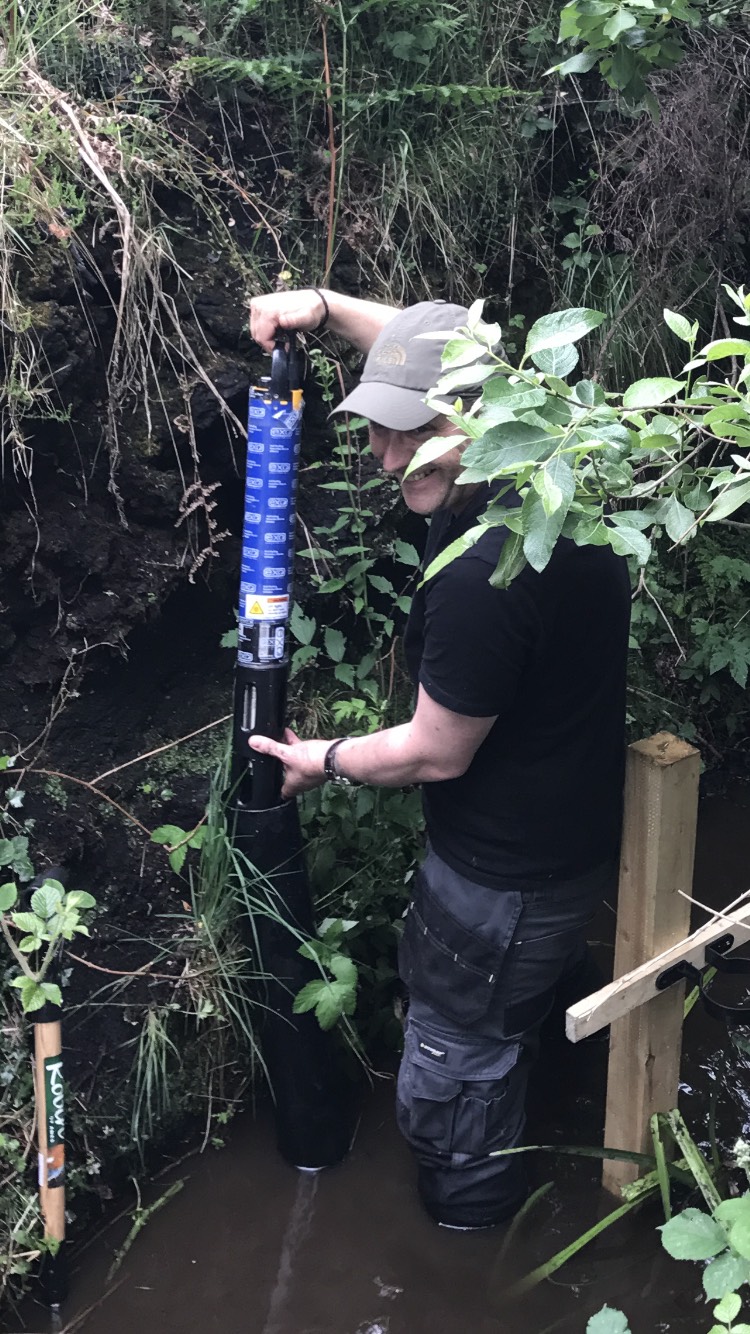Can your local bog save the planet?
By John Cody, Project Hydrologist
It is a long accepted fact that active bogs sequester carbon from the atmosphere and potentially contribute to mitigating human induced climate change. However the scale of this climate change mitigation potential has been the subject of debate. Bogs are dynamic ecosystems and a bogs status as a sink or source of atmospheric green house gases is determined by ecological and climatic conditions. Thus the role of an active bog in mitigating climate change is variable in time and space.
The National Parks and Wildlife Service, through The Living Bog project, has initiated a collaboration with scientists from Trinity College Dublin and Carl Stuart Group to monitor how much carbon is lost from raised bogs in discharge from drainage networks. This project will use a Florescent Organic Matter (FDOM) sensor and a YSI EXO2 Sonde to continuously monitor drainage discharge rates and concentrations of dissolved organic carbon and dissolved organic nitrogen from raised bog Special Areas of Conservation (SAC) sites to determine the mass of carbon and nutrients exported from the bogs through drainage.
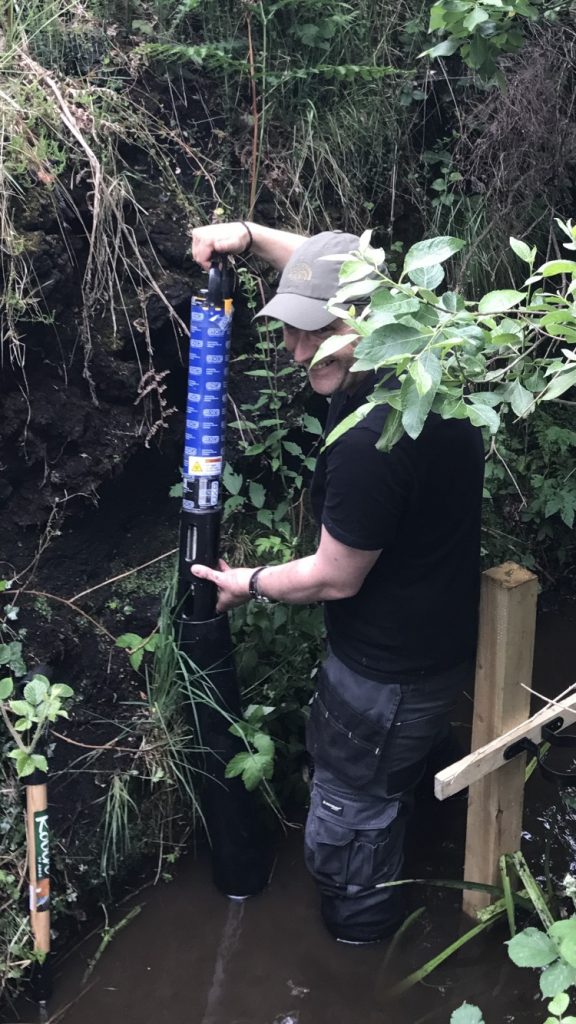
Project Hydrologist John Cody installs an EXO2 Sonde
Under natural conditions peat accumulates in an active peat forming layer known as the acrotelm, at a rate of about 1 mm per year, as the main peat forming plants- sphagnum mosses actively grow in the spring and summer, removing CO2 from the atmosphere and converting it to biomass through photosynthesis.
Similar to a deciduous forest, as the sunlight of summer yields to the creeping gloom of winter, active growth ceases. As the leaves begin to drop from the trees the living sphagnum of the summer dies back and litter accumulates in the pools and lawns of the bog. In a forest fallen leaves are rapidly decayed, returning the carbon stored in their tissues to the atmosphere as the green house gases carbon dioxide, methane and nitrous oxide. In contrast the unique conditions found in bog habitats prevents the decay of the sphagnum litter, causing an almost imperceptible growth in the acrotelm, giving active bogs the ability to sequester carbon from the atmosphere.
Sphagnum mosses make the water in the acrotelm layer acidic enough to inhibit the bacterial decay processes. In addition to the acidity of the water, the water logged nature of the acrotelm results in anoxic conditions below the surface, further impeding aerobic decay processes. Thus an undisturbed acrotelm actively maintains the conditions for peat formation.
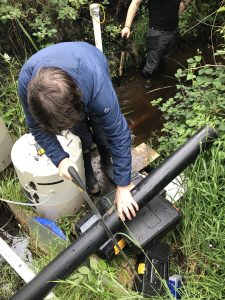
Dr Shane Regan installing the stilling well and static tube for the EXO2 Sensor
The plumes of peat smoke rising from chimneys all over Ireland in the winter air are the visible return of carbon dioxide to the atmosphere that was removed and stored in the living bogs several thousand years ago, perhaps at a time when climate change was driving the extinction of woolly mammoths. The process of carbon loss from the bogs does not end there. In order to produce peat for the fire several meters depth of the bog will have been disturbed establishing an ongoing, destructive feedback loop.
The drainage required to allow peat exploitation causes increased water discharge from the bogs, resulting in dissolved and particulate carbon losses in drainage discharge. The lowered water levels expose large areas of peat to the atmosphere, allowing microbial decay, which results in a continuous, invisible release of green house gases. In addition to CO2 these decay processes produce methane, which is 30 times more potent as a green house gas than carbon dioxide. As the bog dries the sphagnum dies back causing a reduction in the acidity of the bog waters further reducing the bog’s ability to actively sequester carbon.
The Living Bog project is a 5 year conservation project, funded through the European Union LIFE Nature and Biodiversity fund and the Department of Arts, Heritage, Regional, Rural and Gaelteacht Affairs. It’s objective is to restore peat active peat forming conditions on 12 raised bog SAC’s previously impacted by turf cutting. In the process the project will monitor the impact of restoration on the rates of export of carbon from in drainage from the sites.
The Living Bog project is the first time that FDOM sensors have been deployed in monitoring dissolved organic carbon in discharge from the bogs. The deployment of these sensors in terrestrial environments has only begun recently, as climate scientists have begun to recognise the importance of dissolved organic matter in terrestrial nutrient cycles. Carl Stuart Group and YSI have agreed to donate an EXO2 Sonde free of charge to the project for six months. The Sonde has been installed at an existing monitoring CO2 point on Clara bog, established by Trinity College.
Previously this monitoring point had employed traditional Grab sampling approaches. One of the limitations of this approach is that it is difficult to detect changes in carbon concentrations in response to storm events. The ability to continuously monitor flow rates and concentrations simultaneously provided by the EXO2 Sonde will allow researchers to quantify the mass of dissolved carbon exported from the bogs, and factors that influence background rates.
It is expected that through these activities the Living Bog project can begin to quantify the contribution of Irish raised bogs in carbon sequestration, and whether in fact your local bog can help save the planet.
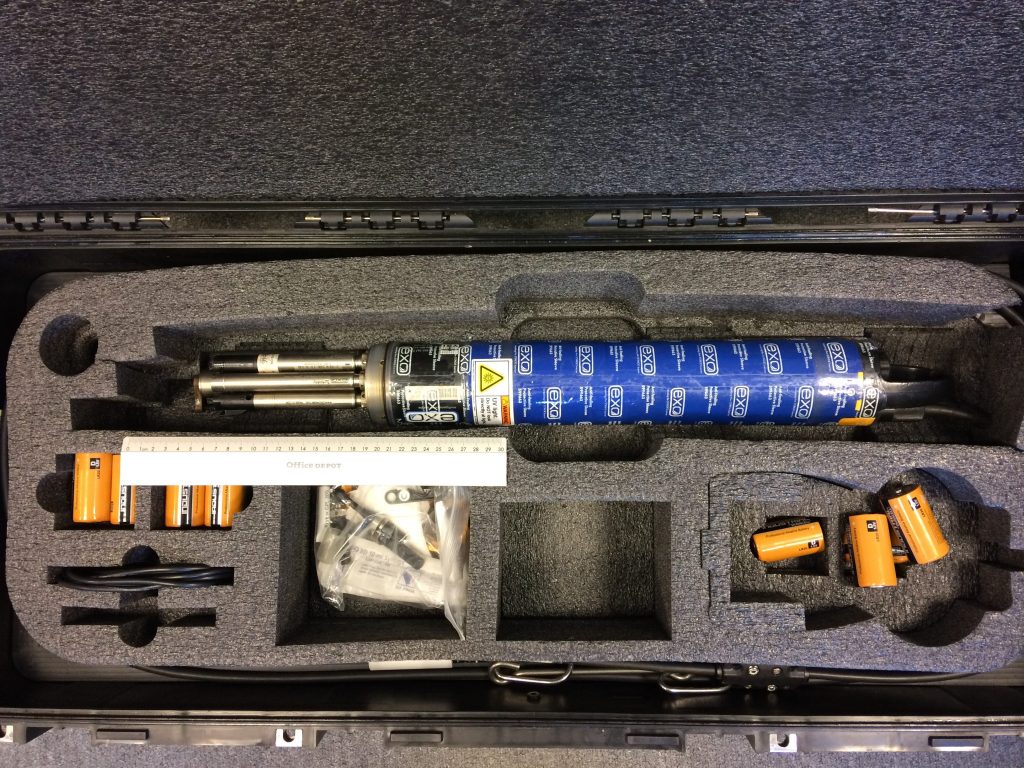
The kit, with thanks to the Carl Stuart Group
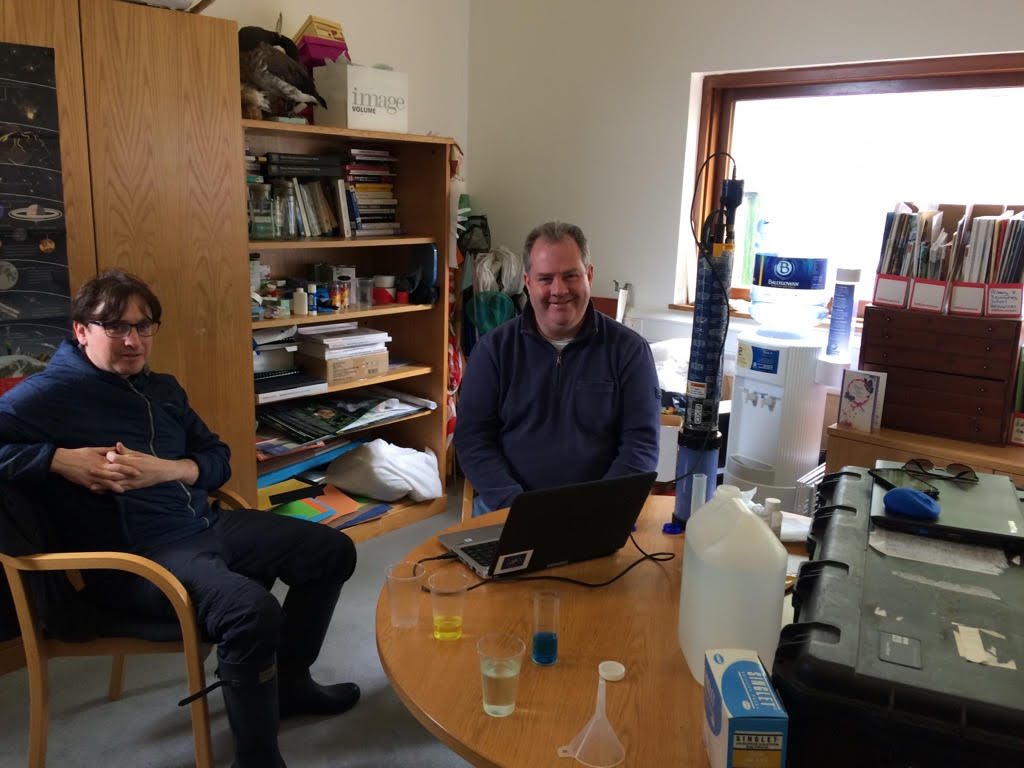
Dr Shane Regan (TCD) and Dr Ken Scally (Carl Stuart Group) prepare the EXO2 Sonde for deployment
